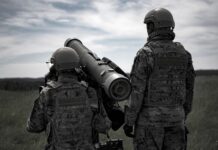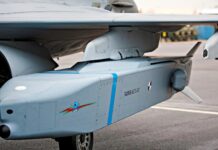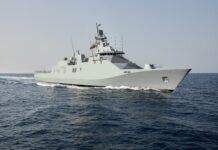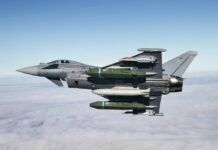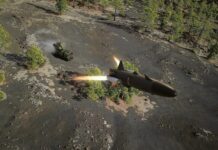Coastal defence
Sidney E. Dean
Coastal zones face a broad array of airborne and seaborne threats. Since defence against airborne threats is not unique to coastal zones, this article will focus on the seaborne category.
The seaborne category includes a range of threats including: reconnaissance and direct attack missions by manned and unmanned vessels; stealth missions to conduct underwater sabotage, infiltrate special operations forces, lay mines, and prepare to ambush ships entering and leaving port; and full-scale amphibious landings. A viable coastal defence therefore requires multiple systems working in concert to address the various aspects of the threat scenario. These systems must form a layered structure to confront and neutralise enemy advances. Ideally, the enemy should be prevented from approaching the coast, or at least weakened while still in the outer reaches of the littoral zone. Since this is not always possible, coastal defence networks must also be prepared to repel the enemy up to the shoreline itself.
Key elements of a coastal defence need to include an effective offshore surveillance network to identify and track hostile forces early on. These will inform effectors including manned and unmanned aircraft, surface and subsurface vessels, as well as shore-based missiles to interdict enemy forces. Finally, mobile coastal defence units must be prepared to intercept hostile forces – including amphibious units – who penetrate the primary defensive ring.
Surveillance and reconnaissance
Effective defence begins with situational awareness. The outermost detection ring will be formed by satellite, aircraft-based reconnaissance, and by offshore patrol vessels. These can be augmented by dedicated coastal surveillance radars, which can be supported by optical, acoustic, and signals intelligence sensors. Radars and other sensors can be deployed on the coast, preferably at elevated points, which include towers to provide over-the-horizon early warning. They can also be forward deployed on oil platforms, windfarms and other offshore infrastructure, as well as on nearby islands.
Several dedicated coastal surveillance radar systems are on the market. These include the SCANTER family of radars produced by the Danish firm Terma A/S. According to the company, more than 3,000 SCANTER systems are in service, with 65% of all coastal surveillance radar systems relying on Terma’s sensor technology. The SCANTER series comprises 2D X-band radars in a range of sizes and instrumented ranges. At the smaller end, the transceivers operating in the X-band. of the SCANTER series range from 26 kg (for the SCANTER 2000 series), to 77 kg (for the SCANTER 5000 series), and are therefore fairly easy to emplace. Depending on the configuration, the maximum instrumented range can vary from 89 km (48 NM) on the SCANTER 2200 series, out to 178 km (96 NM) for the SCANTER 4000/5000 series, the latter option providing over 98,000 km2 coverage according to the manufacturer. Again, depending on configuration, the system can identify manned and unmanned aircraft at various altitudes, as well as surface objects ranging from ships down to jet skis.

Credit: Hensoldt
The SPEXER 2000 Coastal radar produced by Hensoldt offers a relatively portable option for coastal surveillance. Capable of detecting targets at sea, on land and in low-altitude flight, the X-band pulse-doppler AESA radar is equipped with an antenna measuring 1 × 0.7 × 06 m (width, height, depth), and can be deployed in a fixed mode atop a mast, or a relocatable tripod when portability is a priority. The instrumented range varies from 40 km (21.6 NM) in standard configuration, or optionally scaled up to 80 km (43.2 NM) at the higher end. The radar is capable of detecting surface ships and low-flying helicopters at or near the maximum range capacity, and the manufacturer has claimed that its high Doppler resolution enables it to locate small and slow-moving sea targets, including small boats at 20 km (10.8 NM), and swimmers at 1 km (0.5 NM). The SPEXER 2000 can be optionally combined with a camera system to provide additional target information.
Technical means of surveillance can be augmented by human coastal spotters. This is particularly important for nations with very long or complex coastal zones which cannot be comprehensively covered by fixed sensors. The Canadian Army maintains a 5,000-strong reserve force known as the Canadian Rangers, composed of residents of remote coastal communities; the Rangers conduct regular surveillance patrols and report unusual activities as well as sightings of ships or aircraft. The 22,000 strong Swedish Home Guard, while more versatile, also counts territorial surveillance as well as target identification and artillery spotting among their duties.
Land-based anti-ship missiles
Given the proliferation of long-range precision strike missiles, fixed coastal batteries have become too vulnerable to pre-emptive attack. By contrast, mobile systems remain a viable and vital weapon to counter hostile vessels positioned for land attack missions or amphibious assault. Beyond their ability to actually damage or sink ships, longer-range anti-ship missile (ASM) batteries incentivise enemy warships to remain at a greater distance offshore. This reduces the effectiveness of the enemy’s own land attack missiles, and forces amphibious ships to launch their landing craft from over the horizon, all to the benefit of the defender.
The Exocet Mobile Coastal Defence System (EMCDS) produced by MBDA incorporates the latest version of the Exocet MM40 Block 3 anti-ship cruise missile (ASCM). The high-subsonic, very-low level sea-skimming missile has an effective range of over 200 km (108 NM), and provides a good penetration capability against defended enemy surface targets. A hybrid INS/GPS 3D navigation system coupled with a radar altimeter, allows coordinated flight of multiple missiles using different trajectories and terminal attacks from different azimuths, with simultaneous time on target. Terminal guidance against moving maritime targets is achieved through an X/Ka-band active radar seeker. The truck-mounted EMCDS consists of up to five vehicles, including a mobile control unit, a mobile sensor unit (with radar, mast-mounted electro-optical systems, and AIS for target discrimination), and up to three mobile firing units (each carrying four missiles).

Credit: MBDA
The US armed forces are planning to attack maritime targets from existing rocket artillery systems such as the tracked M270 multiple launch rocket system (MLRS) and the wheeled M142 High Mobility Artillery Rocket System (HIMARS). Potential munitions to be equipped with multi-mode seekers capable of acquiring maritime targets include the new Precision Strike Missile (PrSM) with a 499 km (269.4 NM) range, and the Long-Range Anti-Ship Missile – Surface Launched (LRASM-SL), whose surface-launch range is undisclosed, but considered long-range. US Marine Corps and US Army experiments have also repeatedly fired the 227 mm Guided Multiple Launch Rocket System (GMLRS) against maritime targets. The supersonic (Mach 2.5) rockets have a range of 84 km (45 NM), while the developmental extended-range variant will strike targets as far away as 150 km (81 NM). HIMARS and MLRS can carry six and 12 GMLRS rockets respectively. These airmobile launcher systems and rockets are available in large numbers, and offer a significant capability to repel amphibious landings.
Coastal defence surface vessels
Coastal defence vessels must be comparatively small and highly manoeuvrable in order move freely in shallow waters and take advantage of cover offered by islands or general maritime ‘clutter’. The largest suitable ship type is the coastal defence corvette, which is large enough to carry a capable sensor suite and ASMs, but stealthy enough to reduce the detection risk by hostile vessels.
The shallow-draught Swedish Visby class corvettes built by SAAB Kockums AB entered service in 2009. Saab was awarded the Mid-Life Upgrade (MLU) contract in 2021, which will keep the Visby class relevant beyond 2040. The hull and superstructure are designed to significantly minimise the radar cross-section of the ships. Sensors and weapons are hidden internally when not in use. The thermal and acoustic signatures are also reduced, leading to the corvettes being considered low-observable, especially when operating under the cover of the Swedish coastal archipelago. Sensors include the SAAB Sea Giraffe AMB 3D Passive Electronically Scanned Array (PESA) air and surface surveillance radar, the CEROS 200 fire control radar, as well as hull-mounted and towed sonar systems by General Dynamics Canada. The post-MLU weapons load is optimised for coastal defence operations and includes a 57 mm Bofors gun, eight RBS-15 Mk3 ASCMs (upgraded from the original Mk2 variant); SAAB Torped 47 light torpedoes (replacing the Torped 45) designed for shallow-water operations against surface and submarine targets; 127 mm anti-submarine warfare (ASW) grenades; mines and depth charges; and CAMM surface-to-air missiles (SAMs). The flight deck accommodates an NH90 ASW helicopter.

Credit: Swedish MoD
Finland’s new Pohjanmaa class multi-mission corvette will incorporate cutting edge technology to perform the full spectrum of tasks required for coastal defence, including stand-off range anti-surface warfare (ASuW), ASW, air- and missile-defence, minelaying, and electronic warfare/signals intelligence. Construction of the new ships, designed by Rauma Marine Constructions Ltd, began in 2023 and are due to enter service in 2029. Like the Visby class, the Pohjanmaa corvettes will employ the SAAB 9LV combat management system. Weapon systems will include a 57 mm deck gun, eight Gabriel V ASCM, with an effective range of over 200 km (>108 NM), ESSM SAMs, Torped 47 torpedoes, as well as a minelaying capability. The ships are equipped to operate throughout the Baltic under all weather conditions. They will also form the future backbone of the Finnish fleet, with primary missions including repelling seaborne attack as well as ensuring operational control of the nation’s archipelago and the sea lines of communication. According to Finland’s Sea 2032 plan, the Navy will conduct a networked defence based on a unified situational awareness to coordinate attrition of enemy forces in conjunction with other services.
Corvettes are augmented by missile- and gun-armed patrol vessels such as Finland’s Hamina class. The MLU of the Hamina missile boats was completed in 2023, extending their utility into the 2030s. Heavily armed for their size, the 250 tonne displacement vessels now carry a Bofors 40 mm Mk4 dual-purpose gun, four Gabriel V ASCMs, Umkhonto-IR SAMs, and Torped 47 torpedoes, as well as a rail for depth charges or mines. The MLU included sensor upgrades which enhance the air-defence and ASW capabilities of the class.
Recently, unmanned surface vessels (USV) and unmanned underwater vessels (UUV) have emerged as a potentially potent tool to support coastal defence operations. This includes deploying large numbers of networked surveillance drones for wide-area situational awareness. From 2021 through 2023, US Navy Task Force 59 (TF59) successfully tested integration of UAVs, USVs and UUVs with manned vessels in the waters from the Red Sea to the Persian Gulf, with the goal of fielding a multinational flotilla of more than 100 networked drones in that region.
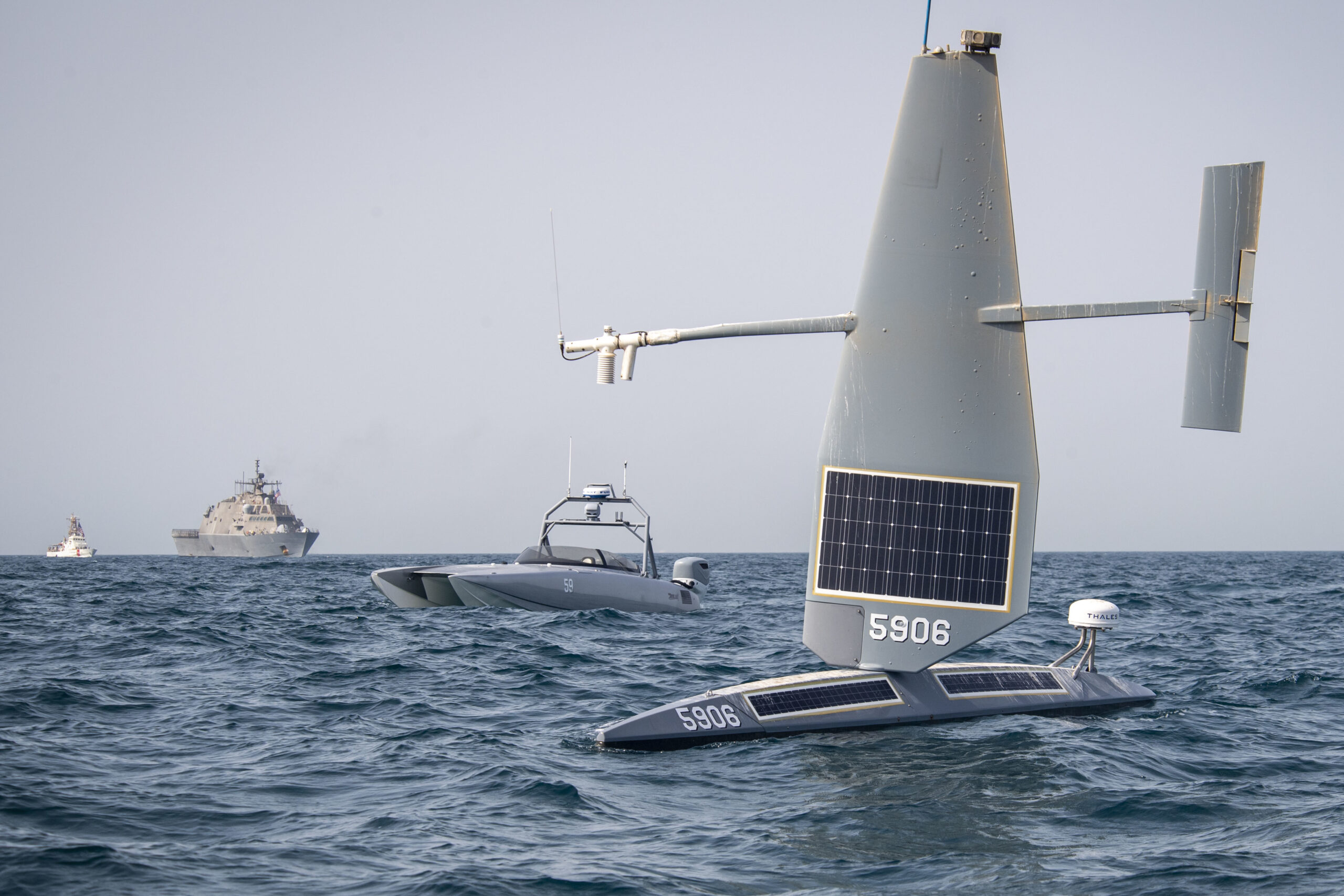
Credit: US Navy
Various nations have also demonstrated small and agile USVs armed with torpedoes or missiles. They can be deployed from shore or from (armed or unarmed) manned vessels. These fast boats have a low radar and visual detection profile, improving their odds of surprise attacks on enemy vessels. As comparatively low-cost systems, they can be quickly acquired in larger numbers, permitting deployment of coastal defence attack swarms. During the October 2023 Digital Talon exercise, TF59 conducted the first US Navy test of an armed USV in the Middle East region. A MARTAC T-38 Devil Ray USV equipped with a Lethal Miniature Aerial Missile System (LMAMS) destroyed several boat targets, using targeting data supplied by sensor-equipped USVs.
Over the past two years, Ukraine’s navy has been the first official armed force to systematically deploy armed USVs in war. According to Ukraine’s government, domestically designed kamikaze sea drones have successfully attacked Russian naval vessels and the Kerch bridge, forcing Russia to restrict naval movements. The 5.5 m long remote controlled (optionally pre-programmable) Ukrainian USVs have an 800 km range and carry up to 300 kg of high explosive payload.
Coastal defence submarines
Submarines optimised for coastal defence operations are generally smaller than blue-water submarines, and have a comparatively shallow draught. The most recent design is the Fincantieri S800 which was publicly introduced at the February 2023 NAVDEX Exposition in Abu Dhabi. At the time, Fincantieri S.p.A. compared the status of the development programme to a post-critical design review milestone. The 800 tonne, 51 m long vessel is optimised for coastal and littoral environs. The submarine is designed to operate at sea for 30 days, whereby the air-independent propulsion (AIP) system permits up to seven days of continuous submerged operations. The control system employs four rudders in an X-configuration, in conjunction with forward hull-positioned hydroplanes to enhance manoeuvrability at low speeds and near the ocean floor. Acoustic and non-acoustic signatures have been reduced to minimise detection risk, while torpedo countermeasures can be activated in case of detection and attack. Sensors include multiple sonar systems, a search optronics mast, an attack periscope, and mast-mounted navigation radar, complemented by a mast-mounted radar electronic support measures system. The offensive payload consists of 10 Black Shark heavy torpedoes deployed via five torpedo tubes. Additionally, the submarine can deploy up to eight special operations forces (SOF) divers.
Fincantieri has not announced any customers or production schedule for the S800. Turkey’s STM Defence, on the other hand, began construction of the first STM500 vessel in June 2022. The 42 m long, 500 tonne submarine is capable of blue-water operations but is designed for shallow-water missions. It carries an array of passive and active sensors. Four forward-mounted tubes can fire a variety of heavyweight or guided torpedoes; the payload per mission consists of eight torpedoes. The STM500 can also deploy and operate with UUVs, using them primarily in a reconnaissance and exploration role. Up to six SOF troops can augment the standard 18-person crew.
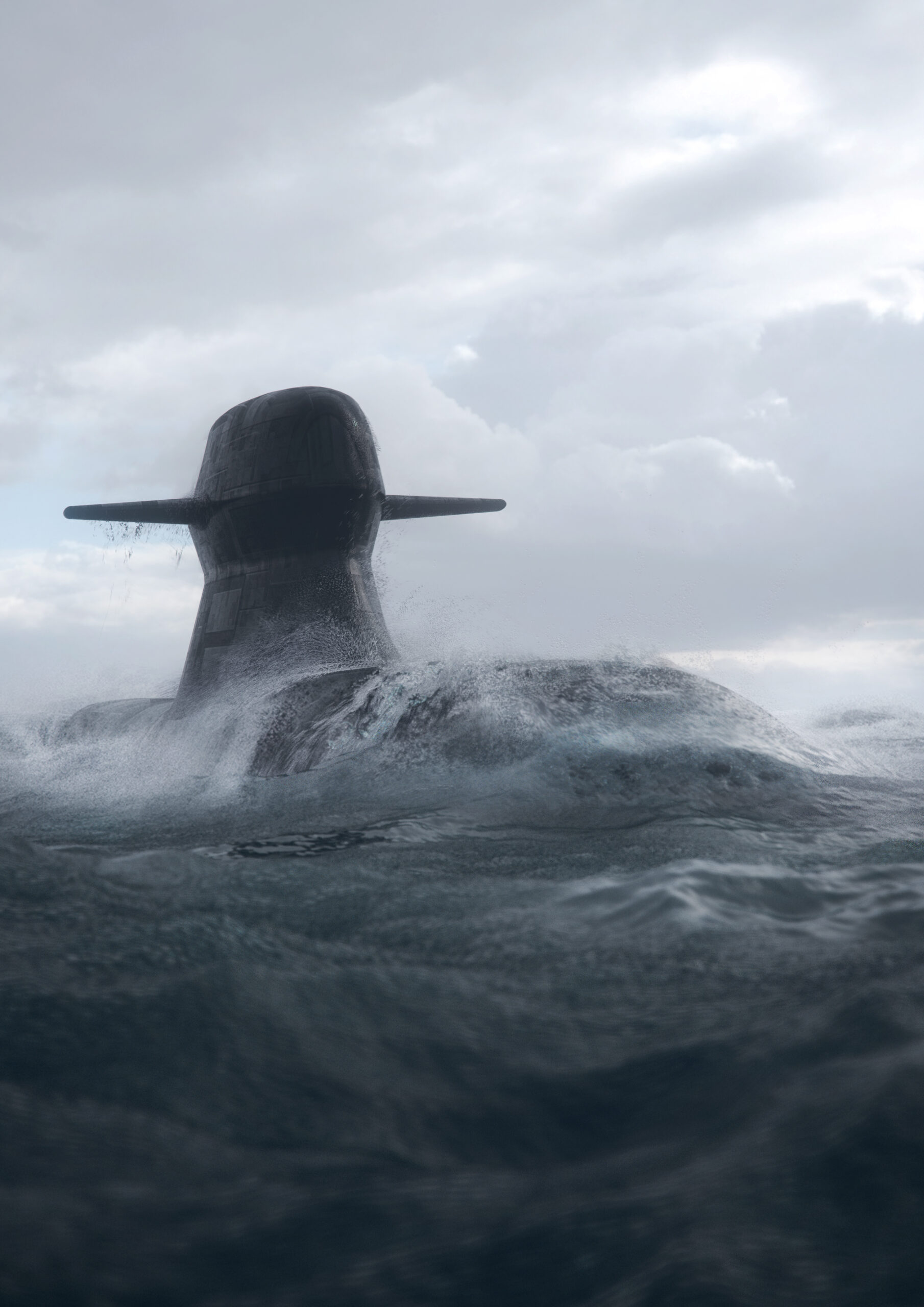
Credit: SAAB
Sweden is planning what is likely to be the most advanced coastal-capable submarine class in the world. Two SAAB-built A26 submarines (Blekinge class), vessels are on schedule for delivery in 2027 and 2028 respectively. The A26 is equipped with three diesel and three Stirling AIP engines, and is designed to carry large amounts of liquid oxygen on board. This will permit the diesel engines to run while submerged, avoiding the need to surface in order to recharge the batteries. Up to 18 days of submerged operations will be possible. In addition to torpedo tubes, the vessel is equipped with a 1.5 m diameter multi-mission portal at the bow, which can deploy mines, UUVs or SOF with their equipment. The combination of manoeuvrability and multiple payloads make the A26 suited for seabed warfare in coastal zones as well as in the greater Baltic Sea, including protection of underwater pipelines and communications cables.
At 65 m in length and with a 2,000 tonne displacement, the ‘A26 Oceanic’ design (used for the Blekinge class) is considerably larger than most coastal defence submarines. It is in fact equally suitable for blue-water operations, and will be marketed internationally as a dual-capable system. For nations solely concerned with shorter-endurance, littoral operations, SAAB has proposed a smaller option in the form of a 50 m, 1,000 tonne variant, dubbed the ‘A26 Pelagic’. At the other end of the scale, SAAB has also proposed an extended version of the A26 Oceanic, dubbed the ‘A26 Oceanic Extended Range’, with a length of >80 m and displacement of over 3,000 tonnes, aimed more toward the blue water segment.
Layered defence
As a last line of defence, ground forces must be prepared to repel landing operations or hunt down hostile amphibious or airmobile units which make it to land. Most nations rely on regular army formations for this task, but a few – including Finland and Sweden – have dedicated coastal defence forces. The Swedish Amphibious Corps and Finnish naval infantry brigades both operate a combination of multi-mission marine rifle companies and coastal ranger commandos trained in reconnaissance and special operations in the offshore archipelagos as well as in the mainland coastal regions. Depending on the unit, these amphibious forces also operate truck-mounted ASMs to combat amphibious warships and their escorts, as well as fast attack craft capable of intercepting landing craft, laying mines, and deploying depth charges against submarines.
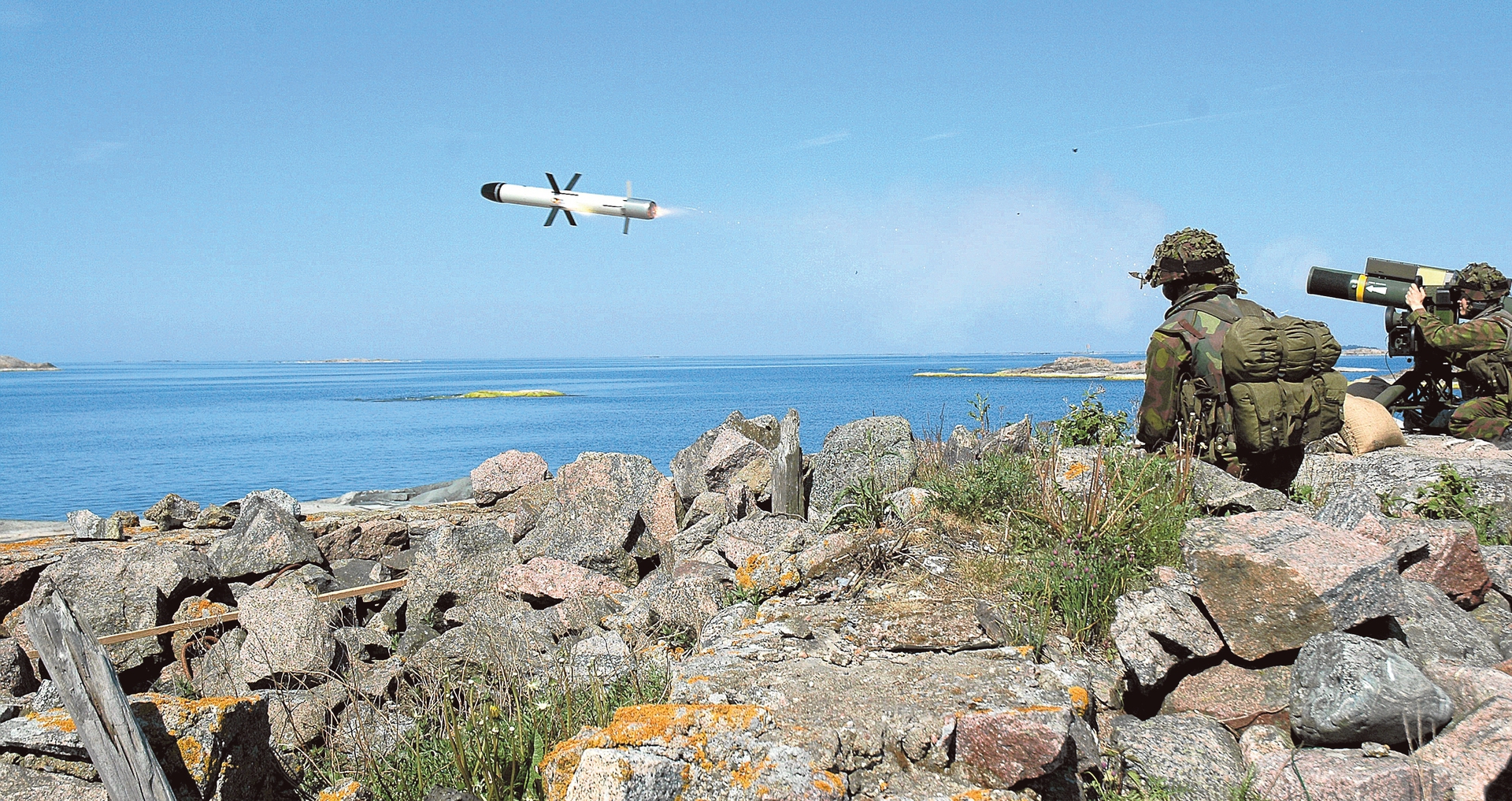
Credit: Finnish MoD
The existence of these units underscores that coastal defence requires a layered and networked approach, beginning at the outer reaches of the littoral waters and stretching all the way to the surf zone, beaches, and inland points. As aggressors’ capacity for power projection grows, defensive arsenals and tactics must keep pace. This includes providing ship- and shore-based ASMs with greater standoff range, signature reduction, and electronic counter-countermeasures (ECCM) to confront hostile vessels as far from shore as possible. The capability to detect and neutralise the enemy’s unmanned reconnaissance, targeting or strike assets – whether air, surface or subsurface — will also be a priority for coastal defence in the near future.
Sidney E. Dean







